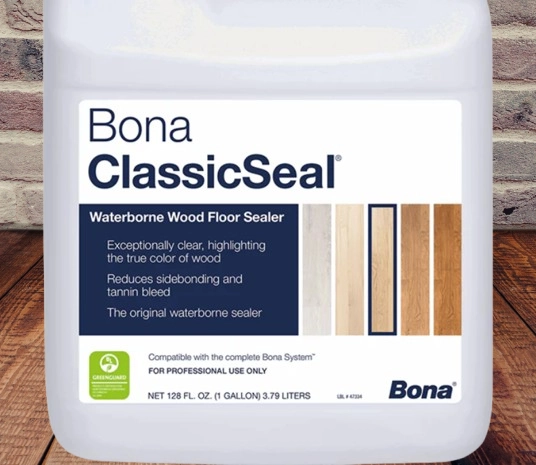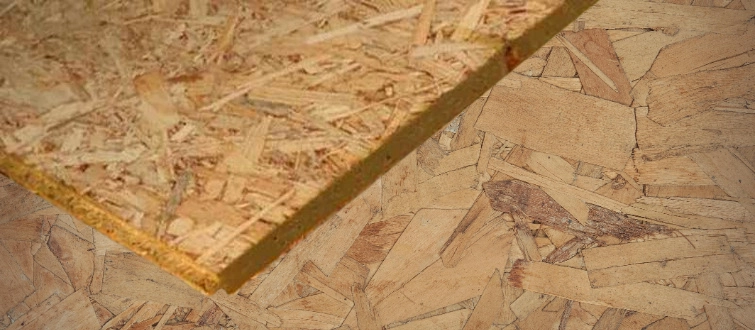Bona Classic Seal for White Oak Floors

White oak floors look fantastic, if there’s one thing that all homeowners can agree on! A white oak floor offers a classic yet refined finish to your house in addition to making it appear more sophisticated.
Beyond appearances, white oak flooring are incredibly resilient. However, you might think about applying a sealer like Bona Classic if you want to increase their longevity. A sealer like this can prolong its life, keep its color, and even make floor maintenance simpler.
That takes us to our topic for today, in which I will teach you all you need to know about applying Bona Classic Seal on White Oak.
Is Bona Classic Seal the Complete Fix for Your White Oak Floors?
A water-based sealer called Bona Classic Seal is applied to a variety of wood floors, including cherry, walnut, red oak, and white oak.
Hardwood floors are typically treated with this sealant. Its two primary functions are to protect the floor from spills and to bring out the inherent beauty of wood.
Please feel free to apply Bona Classic Seal if you recently installed white oak flooring and want to maintain its natural finish and increase its longevity. Both professionals in the flooring industry and homeowners hold this view.
Examining the Advantages: What Makes Bona Classic Seal the Best Option for White Oak?
We now know that white oak can be treated with Bona Classic Seal. Let’s examine a few benefits of applying Bona Classic Seal on a white oak floor:
- It Enhances White Oak’s Visual Appeal
Do not misunderstand me. The white oak floors are immaculate. However, the aesthetic change will be astounding after you apply a layer of Bona Classic Seal.
When applied to white oak, Bona Classic Seal enriches the color and improves the wood pattern. You will thus observe a notable improvement in a white oak floor’s aesthetic appeal.
- Bona Classic Seal Lessens White Oak Floor Tannin Bleeding
If you have never heard of tannin bleed, it is the process by which the natural extracts in white oak cause a brownish or yellowish stain to appear on the surface.
Bona Classic greatly reduces tannin bleed by sealing the white oak’s surface. As a result, you won’t experience these kinds of stains throughout the duration of your white oak floor.
- It shields the white oak floor from normal wear and tear as well as scratches.
Your white oak floor may appear unattractive due to scratches from pets or traffic. However, if you have used the Bona Classic Seal, you don’t need to be concerned about it.
By forming a protective layer, the sealant shields the surface from spills, food stains, and scratches.
- It guards against moisture and UV damage to white oak floors.
White oak floors might deteriorate more quickly after prolonged exposure to moisture and UV light. However, a sealant such as Bona Classic will prevent moisture and UV rays from penetrating.
- It improves adhesion when combined with other finishes.
The majority of people are unaware that Bona Classic serves as both a primer and a sealer. Consequently, it encourages improved adherence to any coats that may be applied over White Oak.
A Comprehensive Guide on Applying Bona Classic Seal to White Oak Floors
- Step 1: Get the floor ready
The first step in applying any sealer to a wooden floor is always preparation. Start by clearing the white wood floor of dust and other impurities.
For a smooth and even finish, I also suggest sanding the floor. After you’re finished, use a vacuum to remove any remaining dust. Use a fresh cloth to clean it to complete the preparation.
- Step 2: Pour the Sealer after thoroughly mixing it.
Some of the sealer’s ingredients sink to the bottom while being stored. Therefore, the likelihood of receiving an inconsistent application is very high if you apply it directly. Make sure you mix the Bona Classic Seal well. Next, drop a tiny bit onto the ground.
- Step 3: Evenly Distribute It
Start applying the sealer to the entire white oak floor using a Bona roller or a T-bar. Spreading it in the direction of the wood grain is ideal. Always use thinner coats and be sure to leave no excess sealer behind, just like when painting.
- Step 4: Hold off on sanding until the sealer has dried.
Before sanding the sealer down, allow it to cure completely. Why should Bona Classic Seal be sanded? Any flaws or rough areas you may have made during application can be fixed with sanding. However, you can omit the sanding if it’s perfect.
- Step 5: Apply Additional Coats If Required
You can apply one or two additional coats, depending on the finish you want. Don’t forget to allow ample time for each coat to dry. Additionally, remember to sand any flaws.
Bona Classic Seal Curing Time on White Oak Floors
Two to three hours are needed for Bona Classic Seal to dry. Temperature and humidity are two variables that can impact how long Bona Classic Seal takes to dry.
Bona Classic Seal will take a lot longer to dry in extremely cold and humid conditions. It should be dry in five or six hours.
Bona says that temperatures between 65 and 80 degrees Fahrenheit are the best times to use it. Humidity levels between 40% and 60% will be ideal.
How Many Bona Classic Seal Coats Should I Apply to White Oak Floors?
One application of Bona Classic Seal is sufficient to enhance the finish and add a protective layer to a white oak floor.
However, you can add two more coats to make it three if you want a thicker coating for protection or aesthetic reasons.
However, one application of Bona Classic Seal is typically sufficient. Another finish, like the Mega or Bona Traffic, comes next.
You can utilize the Bona Classic Seal while we’re talking about finishes, but I’d strongly suggest sticking to Bona-made finishes. There is no other method to guarantee compatibility.
The Best Maintenance Procedures for White Oak Floors with Bona Classic Seal
Using Bona Classic Seal on white oak flooring has several benefits, including making the floors more easier to maintain and clean.
However, there are a few upkeep habits you can adopt if you want the Bona Classic Seal to endure far longer on your white oak floor:
- Regularly clean your white wood floor. Debris and dirt can degrade the sealant by puncturing it.
- Avoid using harsh cleaning products. Despite its durability, powerful chemical cleansers can quickly wear down Bona Classic Seal.
- Cover your furniture’s feet with felt pads for protection. As you move the furniture, this should stop scratches.
- Don’t forget to periodically recoat the white oak floor with Bona Classic Seal. The amount of traffic your white oak floor will see will determine this.
What is the lifespan of Bona Classic Seal on white oak floors?
On a white wood floor, Bona Classic Seal can endure for ten or fifteen years. In a residential area where there is little exposure to traffic, this is feasible.
On a commercial white oak floor, however, it can endure for five to seven years. As a general rule, the sealant should be reapplied at least once every year or two. That should make it last longer.
Application: Should You Hire a Professional or Do It Yourself?
Professionally speaking, I would suggest that you use Bona Classic Seal in a do-it-yourself manner. As previously said, the application process is rather simple. It should be easy if you have the necessary equipment and the preceding guide.
I am aware, though, that not everyone enjoys do-it-yourself projects. It’s wise to get expert assistance if you’ve never worked with floor sealants.
Bona Classic Seal can be applied to your white oak floor by a qualified flooring contractor. Of course, at a cost. However, quality workmanship is ensured when you hire an expert.
Typical Errors to Avoid When Sealing White Oak Floors with Bona Classic Seal
Not that I’m expecting a bad thing to happen. However, when applying Bona Classic Seal to white wood, there are a few common blunders people make. Here is a list of various errors and how to fix them:
- Bubble formation: This is typically brought on by shaking the container briskly before using it.
- Poor adherence: Inadequate drying time is frequently the primary cause of poor adhesion. Let each coat dry for at least three hours.
- A dirty white oak floor: As the Bona Classic Seal dries, dirt or impurities may result in stains or other flaws. Peeling might also result from a dirty floor.

